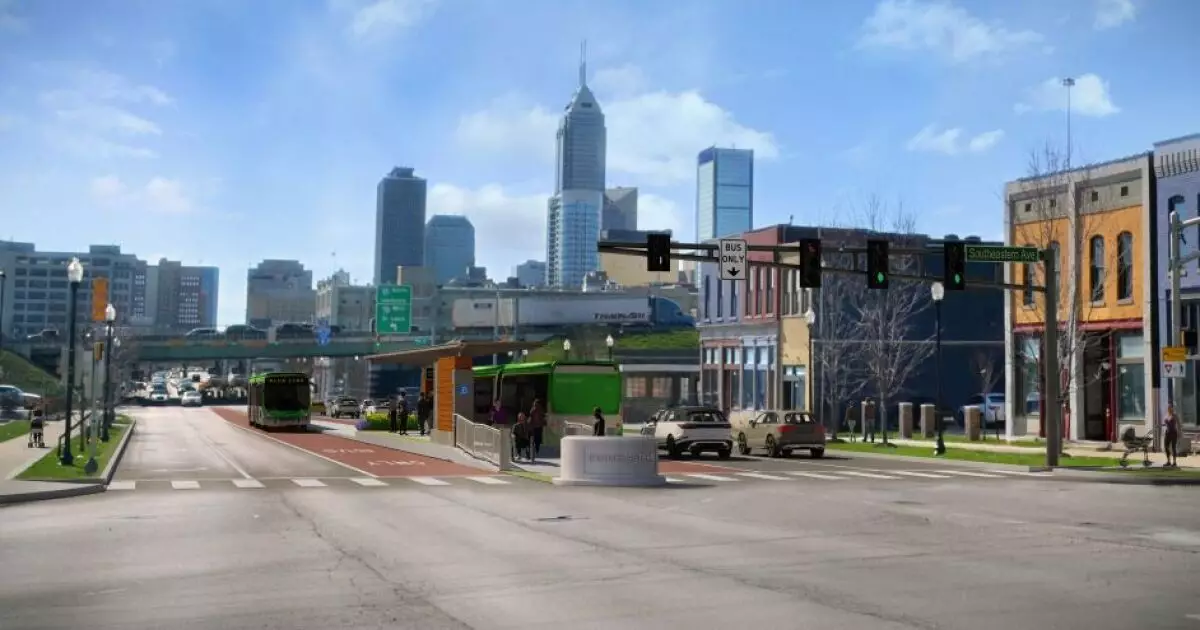In an era where public transit is often neglected, the decision to issue a $125 million bond for Indianapolis’ Blue Line Bus Rapid Transit project stands out as a commendable move towards enhancing urban mobility. The Indianapolis Public Transportation Corporation (IndyGo) aims to implement rapid bus routes that not only promise efficiency but project a vision for a modernized transit system. As the city embraces this ambitious project, it calls into question the larger narratives surrounding infrastructure investment and public services that prioritize citizen needs. Amidst rising financial uncertainty, this bond sale signals a forward-thinking approach that many cities—especially in the United States—urgently require.
However, analyzing the context of this bond issuance reveals inherent challenges. It raises questions about fiscal responsibility, market fluctuations, and whether this endeavor will genuinely meet the demands of commuters. The ability of IndyGo to navigate these waters will ultimately determine the project’s success, especially as it embarks on an ambitious 24-mile route connecting key points from Indianapolis International Airport to downtown and beyond.
Market Dynamics and Financial Implications
The recent decision to defer the pricing of the Series 2025A local income tax revenue bonds, amid fast-rising municipal bond yields, exhibits the treacherous terrain of economic uncertainty that public entities must contend with. Joe Glass, the executive director of the Indianapolis Local Public Improvement Bond Bank, made it clear that such a delay was prudent, indicating a cautious, albeit skeptical, stance on the abilities of the market to absorb such financial instruments. This decision emphasizes the importance of being vigilant in today’s volatile economic landscape—where capital is both an asset and a liability.
The state of the financial markets is under immense pressure, driven by geopolitical tensions and economic disturbances. Consequently, this bond sale could very well be a litmus test of investor confidence in municipal bonds, especially those tied to essential public services like transit. If these bonds fail to attract sufficient interest or higher yields become the norm, the burden of financing this project could shift uncomfortably back onto local taxpayers. The optimistic projections surrounding local income tax revenue might not hold if this economically fraught atmosphere persists.
What Blue Line Represents Beyond Transit
The Blue Line project is not merely about improving travel; it symbolizes a commitment to urban revitalization and sustainable public transit. By embracing a Bus Rapid Transit model, IndyGo is attempting to replicate the attractive features of light rail without the prohibitive costs associated with such infrastructure. This is a step that aligns with contemporary urban planning principles that favor accessibility and sustainability over the historical over-dependence on personal vehicles.
With plans to launch 36 new bus stations along the route, the Blue Line could significantly alter commuting patterns in Indianapolis. This accessibility will likely serve marginalized communities, fostering socio-economic development and inclusivity. Moreover, as residential and commercial interests begin to congregate around transit nodes, the potential for growth cannot be overstated. Urban centers thrive on connectivity, and investing in transit infrastructure promises long-term benefits that far outweigh initial costs.
Still, the question remains: will adequate funding ensure that these stations are adequately equipped and maintained? Public vigilance over the funding allocation will be crucial as one of the challenges in similar projects has been the inevitable decline in services post-implementation due to funding failures. Sustainable growth must not only focus on immediate infrastructure but also on the operational frameworks that support ongoing services.
S&P Ratings and Future Implications
The S&P Global Ratings’ AA-minus rating for IndyGo reflects a notable level of financial health and public confidence in the transit authority. Factors driving this rating include a robust local income tax revenue stream, which underscores a solid financial foundation. However, while this rating is positive, it does not negate the potential volatility due to varying ridership levels—a reflection of the systemic vulnerabilities that have been exacerbated by the pandemic.
Indiana’s approach emphasizes the need for a dedicated local income tax to sustain these projects, a model that could encourage other municipalities to follow suit. Yet, the heavy reliance on a local income tax could also present a double-edged sword—what happens when local economies falter, and tax revenues dwindle? If the historical farebox recovery ratio—hovering around 5%—is any indication, it becomes painfully clear that IndyGo can’t solely lean on taxpayer contributions for sustainability.
The Blue Line isn’t just an investment in public transport; it epitomizes the strategic vision that municipalities must adopt to ensure their growth and relevance in a rapidly evolving world. As IndyGo forges ahead, the path towards an interconnected, efficient urban transit system must remain vigilant against the myriad challenges that lie ahead.

